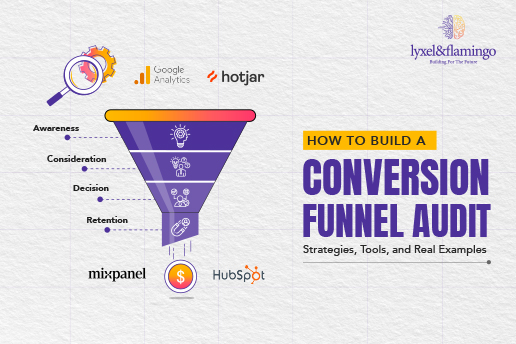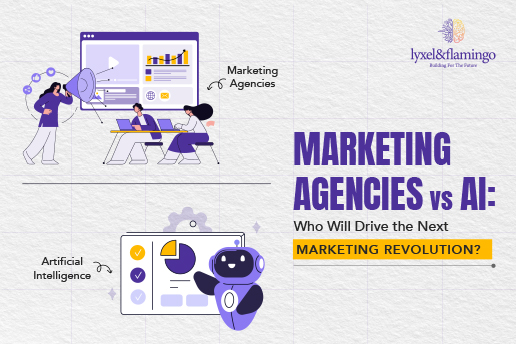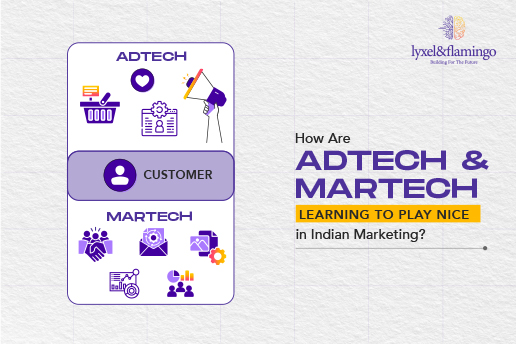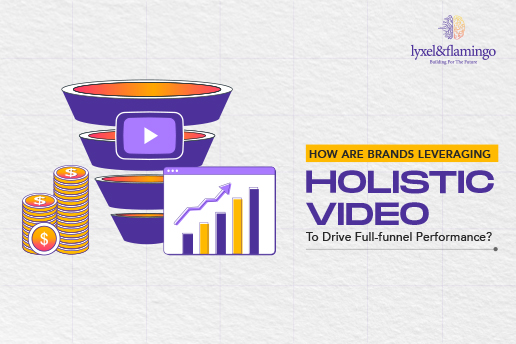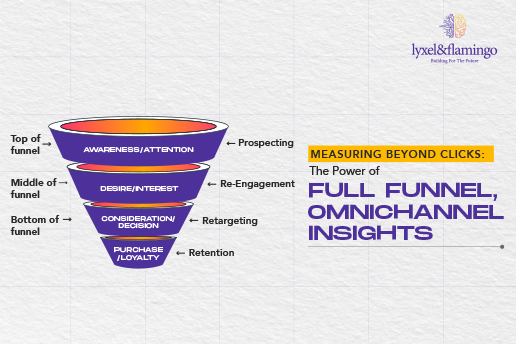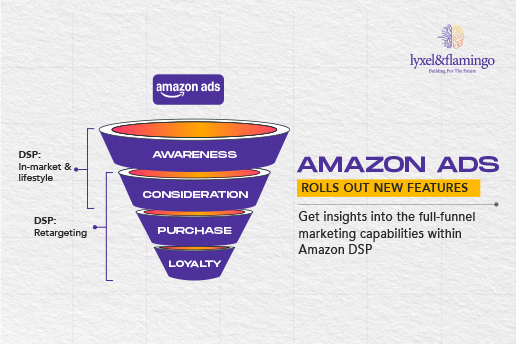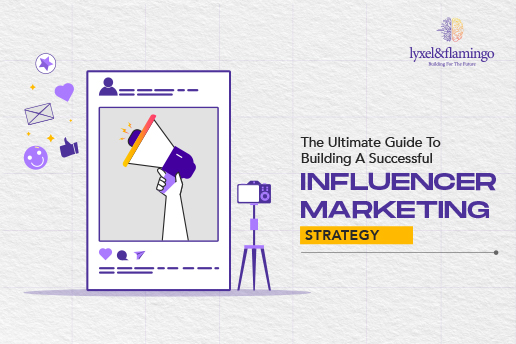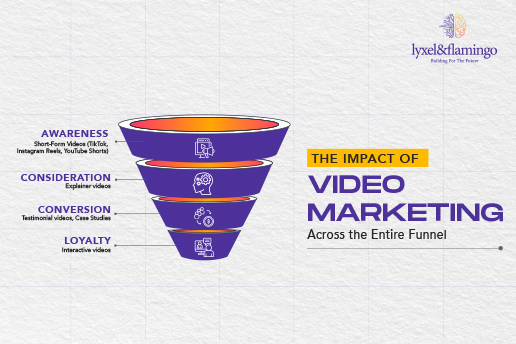The line between digital and physical experiences is no longer clear-cut. Consumers today move fluidly between online research and in-store purchases, expecting a seamless, connected journey. A shopper might discover a product through a social media ad, read reviews online, visit a physical store to try it out, and ultimately purchase via a mobile app.
The Future is Hybrid
This shift has redefined how businesses must approach marketing. Traditional digital strategies alone are no longer enough. Brands need to integrate Online-to-Offline (O2O marketing) strategies to create frictionless experiences that drive engagement and conversions across both worlds.
By bridging digital and physical touchpoints, O2O digital marketing strategy helps businesses not only capture intent but also influence real-world actions, whether it’s increasing store footfall, enhancing in-store engagement, or driving repeat online purchases.
In this blog, we’ll know more about O2O marketing. Let’s dive in.
What is O2O Marketing?
Online-to-Offline (O2O) marketing is a strategy that connects digital interactions with real-world experiences, seamlessly guiding customers between online and physical touchpoints. It makes sure that digital engagement—whether through social media, ads, email, or search—translates into measurable offline actions like store visits, purchases, or in-person interactions.
Unlike traditional online marketing that focuses solely on digital conversions, O2O marketing is about bridging the gap between virtual and physical spaces, making the entire customer journey more integrated and effective.
How O2O Marketing Works?
- Attract → A customer sees a digital ad, social post, or receives a personalised email.
- Engage → They interact with the content, such as clicking a link or signing up for an offer.
- Drive Action → The online experience encourages an offline action, such as visiting a store, redeeming a discount, or attending an event.
- Re-Engage → Post-purchase, the customer is brought back online through follow-ups, loyalty programs, or personalised recommendations.
Common O2O Marketing Formats
- Click-and-Collect (BOPIS) – Buy online, pick up in-store.
- Geotargeted Ads – Digital ads triggered by a customer’s physical location.
- QR Code Engagement – Scannable codes that provide instant online access to deals, reviews, or product info.
- In-Store Digital Experiences – Augmented reality (AR), interactive kiosks, or mobile-driven engagement.
- Reverse O2O – Encouraging in-store shoppers to engage online through app downloads, digital rewards, or subscriptions.
By strategically blending digital reach with offline impact, O2O marketing creates a holistic customer experience, making sure no touchpoint is disconnected.
O2O Digital Marketing Strategy is No Longer Optional
Today’s consumers don’t see a divide between online and offline. They expect a seamless experience across both. Whether researching a product online before visiting a store or scanning a QR code in-store to find more details online, customers naturally move between digital and physical channels. Businesses that fail to bridge this gap risk losing engagement, sales, and customer loyalty.
Here are the key reasons why O2O is essential for businesses:
1. Changing Consumer Behavior
- Research Online, Buy Offline (ROBO): Today, shoppers research products online before making an in-store purchase.
- Customers expect convenience, whether it’s click-and-collect (BOPIS) or instant access to product reviews while shopping in-store.
- O2O marketing makes sure that brands are present at every stage of the decision-making process, from discovery to purchase.
2. Bridging the Trust Gap Between Digital and Physical
- While online shopping is growing, many customers still prefer in-store experiences to touch, try, and verify products before purchasing.
- O2O digital marketing reinforces trust by allowing customers to engage with brands both online and offline.
- Features like virtual try-ons, in-store pickup, and live inventory updates provide reassurance and drive sales.
3. Omnichannel Advantage: Driving Engagement Across Multiple Touchpoints
- A customer who interacts with a brand both online and offline is more likely to convert and remain loyal.
- O2O marketing ensures a consistent brand experience across social media, websites, email, apps, and physical locations.
- Integrated customer journeys lead to higher engagement, increased conversions, and stronger brand loyalty.
4. Data-Driven Growth and Personalisation
- Merging offline and online data provides a 360-degree view of customer behavior.
- Businesses can use AI-driven insights to create personalised offers, dynamic pricing, and hyper-targeted marketing.
- Data analytics help brands optimise campaigns, ensuring higher ROI.
Consumers expect brands to blend the convenience of digital with the tangible experience of physical stores. Businesses that implement a strong O2O marketing strategy will drive more sales, build stronger customer relationships, and stay ahead in an increasingly hybrid marketplace.
Main Components of an Effective O2O Digital Marketing Strategy
A successful Online-to-Offline (O2O) strategy isn’t just about driving foot traffic to physical stores, it’s about creating a seamless, data-driven customer experience that blends digital convenience with real-world engagement.
To achieve this, businesses need to integrate key elements that ensure a frictionless journey from online discovery to offline action (and vice versa). Let’s take a look at its core elements:
1. Hyper-Personalisation Through Data & AI
- Leverage first-party data from websites, apps, and CRM systems to understand customer behavior.
- Use AI-driven insights to deliver personalised recommendations, offers, and reminders.
For example, a customer browsing running shoes online gets a location-based ad for an in-store discount at the nearest store.
2. Seamless Omnichannel Experience
- Ensure consistency in branding, messaging, and customer experience across social media, website, mobile apps, email, and in-store interactions.
- Enable customers to start a purchase online and complete it in-store (or vice versa) without hassle.
3. Location-Based Targeting & Geofencing
- Use geotargeted ads to send promotions when customers are near a store.
- Use beacon technology to engage customers in-store with real-time notifications.
For example, a coffee chain sends a push notification for a 20% discount when a customer walks near a location.
4. Click-and-Collect & Reverse O2O
- Click-and-Collect (BOPIS) – Let customers buy online, and pick up in-store for added convenience.
- Reverse O2O – Encourage in-store customers to engage digitally through app downloads, loyalty programs, and online purchases.
5. In-Store Digital Integration for a Connected Experience
- Integrate QR codes, AR experiences, and digital kiosks to improve the in-store journey.
- Offer self-checkout, mobile payments, and live inventory tracking for frictionless shopping.
6. Data Analytics for Performance Optimisation
- Track online engagement, in-store visits, and conversion data to refine the O2O strategy.
- Implement predictive analytics to optimize inventory, pricing, and customer outreach.
By combining data, technology, and seamless online-to-offline transitions, businesses can increase conversions, improve customer experience, and build long-term loyalty.
An effective digital marketing strategy isn’t just about selling, it’s about creating a frictionless, personalised journey that meets customers where they are. The O2O approach simply does this job.
Challenges in O2O Marketing. How to Overcome Them?
While Online-to-Offline (O2O) marketing offers a powerful way to connect digital and physical experiences, implementing it effectively comes with challenges. Brands that fail to address these hurdles risk fragmented customer journeys, missed opportunities, and poor ROI.
Here are the most common O2O challenges and strategies to overcome them:
1. Data Silos: Bridging the Gap Between Online and Offline Insights
The Challenge:
- Many businesses struggle with disconnected data between their online platforms (website, social media, CRM) and offline stores (POS systems, foot traffic data).
- Without a unified view of the customer, brands miss opportunities for personalised engagement.
How to Overcome It?
- Invest in a centralised CRM and data integration platform to merge online and offline customer insights.
- Use AI-driven analytics to track customer touchpoints across channels.
- Train staff to collect in-store data (e.g., linking purchases to online accounts).
2. Attribution Complexity: Measuring the Impact of O2O Strategies
The Challenge:
- It’s difficult to track how online efforts (ads, emails, social media) directly impact in-store visits and purchases.
- Many brands struggle to connect digital marketing spend to real-world sales.
How to Overcome It?
- Use unique promo codes and QR-based offers to track online-to-offline conversions.
- Leverage geofencing and beacon technology to analyse store visits triggered by digital campaigns.
- Adopt multi-touch attribution models that credit digital and offline touchpoints.
3. Customer Adoption: Encouraging Engagement Across Channels
The Challenge:
- Some customers hesitate to transition between digital and physical experiences.
- A lack of awareness about O2O offerings (e.g., click-and-collect, QR codes, app integrations) can result in low engagement.
How to Overcome It?
- Educate customers through targeted campaigns about O2O benefits (e.g., faster checkout, exclusive in-store discounts).
- Create incentives for cross channel engagement, such as loyalty rewards for using digital and physical touchpoints.
- Simplify the process with seamless UX, ensuring mobile apps, kiosks, and store experiences are intuitive.
4. Technology Integration: Ensuring a Frictionless Experience
The Challenge:
- Many businesses operate legacy systems that don’t integrate well with modern O2O solutions.
- Disjointed experiences (e.g., a customer buys online but encounters issues picking up in-store) lead to frustration.
How to Overcome It?
- Upgrade to cloud-based POS and inventory systems that sync with e-commerce platforms.
- Ensure a mobile-first approach, optimising websites and apps for in-store engagement.
- Test and refine the end-to-end customer journey, from online browsing to in-store interaction.
5. Maintaining a Consistent Brand Experience
The Challenge:
- Inconsistent messaging between online and offline channels confuses customers.
- Lack of coordination between digital teams and in-store staff weakens the overall experience.
How to Overcome It?
- Train employees to align with digital marketing efforts, ensuring in-store teams understand current promotions and digital tools.
- Maintain brand consistency in messaging, pricing, and offers across all touchpoints.
- Use omnichannel customer support (chatbots, live agents, in-store assistance) to provide seamless service.
Implementing a successful O2O marketing strategy requires businesses to break down data barriers, refine attribution models, and create seamless digital-to-physical transitions. By proactively addressing these challenges, brands can enhance customer experience, drive higher conversions, and future-proof their marketing strategies.
Step-by-Step Approach to Building an O2O Marketing Strategy
A successful Online-to-Offline (O2O) strategy doesn’t happen by accident, it requires a structured, data-driven approach to ensure digital and physical interactions work together seamlessly.
Here’s a step-by-step process for businesses looking to implement O2O marketing effectively.
1. Analyse Consumer Journeys
Identify how customers interact with your brand across digital and physical touchpoints.
- Map out the typical customer journey, from online discovery to in-store purchase (or vice versa).
- Use analytics tools, heatmaps, and surveys to understand where customers drop off or disengage.
- Identify the key friction points that prevent customers from transitioning smoothly between online and offline.
2. Leverage Data & AI for Personalisation
Customers today crave personalised experiences. Use insights to create hyper-personalised O2O experiences.
- Collect first-party data from websites, mobile apps, and in-store interactions.
- Implement AI-driven recommendations to serve tailored content, offers, and reminders.
- Use predictive analytics to anticipate customer needs (e.g., sending in-store promotions based on past online behavior).
3. Optimise for Mobile-First Engagement
Mobile optimisation is one of the effective marketing strategies. Ensure customers can seamlessly transition from digital to physical channels via mobile devices. Here’s how you can do it:
- Make mobile apps and websites O2O-friendly (easy navigation, one-click checkout, location-based promotions).
- Enable mobile payments, digital receipts, and loyalty tracking for in-store purchases.
- Use QR codes and NFC technology to connect offline moments with digital actions (e.g., scan to access exclusive content).
4. Enable Location-Based Targeting & Real-Time Engagement
Location based targeting enables real time engagement. Use geofencing, beacons, and GPS-based ads to drive in-store visits. How to do it? Let’s take a look:
- Implement location-based push notifications to alert nearby customers about exclusive deals.
- Set up geotargeted digital ads to drive foot traffic from local searches.
- Use beacon technology in-store to deliver personalised promotions when a customer enters.
5. Create a Seamless Click-and-Collect (BOPIS) Experience
Bridge the gap between e-commerce and brick-and-mortar stores. Make sure you:
Offer buy online, pick up in-store (BOPIS) options with real-time inventory updates.
Ensure the pickup process is fast, efficient, and user-friendly.
Incentivise in-store visits by offering exclusive in-store discounts or add-on purchases.
6. Implement Reverse O2O for Digital Engagement After In-Store Visits
Bring offline customers back online for repeat purchases and engagement. Here’s a detailed way to do it.
- Encourage app downloads, loyalty program sign-ups, or social media follows in-store.
- Use email/SMS follow-ups to offer post-purchase recommendations or exclusive online deals.
- Promote user-generated content (UGC). Ask customers to share their in-store experience on social media.
7. Measure, Analyse, and Optimise O2O Performance
To get the results from O2O marketing, it’s important to know where you are heading. Continuously refine the O2O strategy for better conversions. How to do it? Let’s see:
- Track key metrics like in-store footfall from digital ads, BOPIS conversion rates, and repeat purchase behavior.
- Use multi-touch attribution models to understand how online and offline efforts contribute to sales.
- A/B tests different O2O marketing strategies to identify what drives the best results.
Brands that strategically integrate digital and physical experiences don’t just increase conversions, they build deeper customer relationships.
By following this step-by-step approach, businesses can create a frictionless O2O journey that drives engagement, sales, and long-term loyalty.
Brands That Leveraged O2O Marketing Approach!
Several industry leaders have successfully implemented Online-to-Offline (O2O) strategies, setting benchmarks for seamless customer experiences.
Here are some of the most popular examples of brands:
1. Starbucks – Mobile Order & Pay
- Starbucks’ app allows customers to order online and pick up in-store, reducing wait times.
- Personalised rewards and location-based promotions enhance engagement and drive foot traffic.
2. Nike – Omnichannel Retail Experience
- Nike integrates its app with physical stores, enabling customers to check inventory, reserve products, and unlock in-store experiences.
- The brand’s “Nike Live” concept stores use digital data to tailor localised product offerings.
3. McDonald’s – Click-and-Collect & Digital Kiosks
- McDonald’s app and self-service kiosks allow customers to order ahead, pay digitally, and pick up in-store.
- AI-powered recommendations personalise meal suggestions based on previous purchases.
4. Sephora – In-Store Digital Integration
- Sephora uses augmented reality (AR) for virtual try-ons, allowing customers to test makeup before buying.
- Its app syncs with in-store purchases, offering personalised beauty recommendations.
5. Walmart – BOPIS & Contactless Shopping
- Walmart’s Buy Online, Pick Up In-Store (BOPIS) system streamlines shopping convenience.
- The introduction of self-checkout and mobile scan-and-go reduces friction in physical stores.
These brands demonstrate how seamless O2O strategies enhance convenience, personalisation, and customer loyalty. Businesses looking to implement O2O marketing approach can draw inspiration from these industry leaders.
Top O2O Marketing Strategies for Higher Conversions
A well-executed Online-to-Offline (O2O) strategy not only connects digital and physical experiences but also boosts conversions by making customer journeys more seamless and engaging.
Here are some of the most effective O2O marketing strategies used by top brands to drive higher conversions:
1. Google My Business & Local SEO Optimisation
Make sure customers can easily find your store when searching online. Here’s what included in this approach:
- Optimise Google My Business (GMB) listings with updated store hours, locations, and reviews.
- Use location-based keywords to improve visibility in local search results.
- Encourage satisfied customers to leave Google reviews, which increases trust and organic traffic.
2. Personalised Retargeting Ads
For a seamless offline customer experience, it’s important to work on online aspects as well. It keeps your brand top-of-mind and encourages offline visits:
- Use dynamic retargeting ads to remind online visitors about products they browsed.
- Show store-specific offers to users based on their location and browsing history.
- Leverage first-party data from website interactions to create personalised ad experiences.
3. In-Store Digital Experiences & QR Code Engagement
When a customer enters the store, he looks for a seamless purchase experience. In-Store Digital Experiences & QR Code Engagement enhances the offline experience with interactive, digital touchpoints. Here’s what can be done:
- Use QR codes for instant access to product reviews, how-to videos, or exclusive discounts.
- Implement AR-powered virtual try-ons for products like makeup, eyewear, or clothing.
- Set up digital kiosks that allow customers to browse extended product catalogs in-store.
Use Case: Sephora’s in-store QR codes let shoppers scan products to view tutorials and user-generated content.
4. Click-and-Collect (BOPIS) & Reverse O2O
This strategy provides convenience while increasing in-store upsell opportunities. Here’s what needed:
- Enable Buy Online, Pick Up In-Store (BOPIS) to reduce delivery time and costs.
- Offer exclusive in-store discounts to customers who pick up their orders.
- Use Reverse O2O tactics to encourage in-store shoppers to engage online (e.g., app sign-ups, digital loyalty programs).
Use Case: Walmart’s BOPIS strategy increases foot traffic and leads to impulse purchases when customers pick up orders.
5. Geofencing & Location-Based Marketing
Reaching customers where they are located also matters a lot. This strategy targets nearby customers with timely and relevant offers. Here’s what needed to be done:
- Use geotargeted push notifications to alert users of in-store promotions.
- Implement beacon technology to personalize the in-store experience with exclusive offers.
- Leverage Google Ads’ Local Campaigns to drive store visits from mobile searches.
6. Seamless Mobile Payments & Loyalty Integration
Mobile optimisation in O2O marketing also matters a lot. It encourages repeat purchases and long-term engagement. To ensure this, it’s important to:
Integrate mobile wallets (Apple Pay, Google Pay, UPI) for frictionless checkouts.
Sync loyalty programs with in-store and online purchases for unified rewards.
Offer instant digital receipts to encourage customers to stay engaged online post-purchase.
Use Case: Starbucks’ mobile app allows users to earn and redeem loyalty points both online and in-store.
By combining these strategies, brands can increase foot traffic, drive in-store sales, and enhance customer loyalty. The key to success lies in delivering a unified, data-driven experience across digital and physical channels.
Drive Omnichannel Success with Lyxel&Flamingo
The future of marketing isn’t just online or offline, it’s the seamless integration of both. Online-to-Offline (O2O) strategies are no longer optional for businesses that want to stay competitive.
Whether you are looking to drive in-store foot traffic, enhance digital engagement, or create a truly omnichannel experience, your brand needs a data-driven, customer-first O2O strategy.
But executing an effective O2O campaign requires the right expertise, tools, and strategic vision. That’s where Lyxel&Flamingo comes in.
At Lyxel&Flamingo, we specialise in bridging the digital and physical worlds through high-impact, performance-driven marketing strategies.
Let’s Build Your O2O Growth Plan!
Are you ready to transform customer interactions into seamless, conversion-driven experiences with effective marketing?
Get in touch with us today! Let’s craft a winning O2O marketing strategy that connects digital intent with real-world action and drives business growth.

